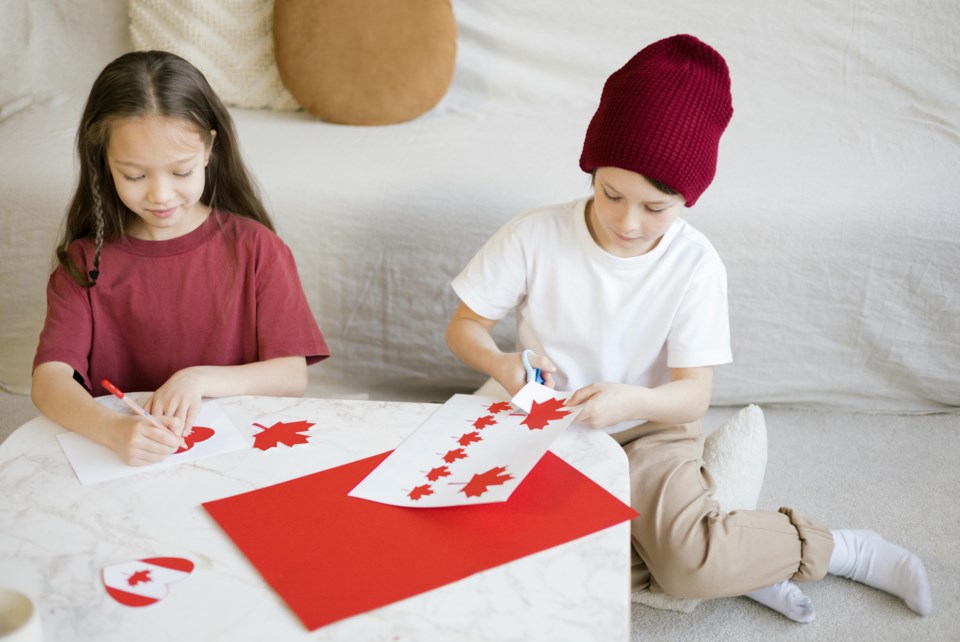Mainstream public discourse in the first months of 2025 have been dominated by tensions between Canada and United States. These include references to Canada becoming annexed as the 51st American state and the trade war, with threats and the application of tariffs by the U.S. and counter-tariffs by Canada.
While this political climate brings uncertainty at an international level, it comes with fear of job loss for many Canadians at a time when the cost of living is already straining many families’ finances.
These topics may appear to be concerns for adults, but children may also feel the effects. As psychology researchers studying parent-child relationships and child mental health, we believe it is important to consider children’s potential fears and anxiety in the current political climate.
Here, we explain why it’s important to address this topic with children, and how parents can do so in a reassuring and informative manner.
Children’s concerns and emotions
While the economy and politics could seem like topics that children would not really care about, recent research suggests that many children and youth actually worry about these topics.
Back in 2020, American parents of children aged six to 17 years old were asked to rate their child’s anxiety about political news, in terms of voting issues covered in media since the 2016 election. According to the study by psychology researcher Nicole E. Caporino and colleagues, 36 per cent of children worried about the U.S. getting into war, and 37 per cent worried about their family’s finances.
Similarly, studies elsewhere suggest children and youth worry about issues affecting their families. Based on these numbers, we can assume that many Canadian children also worry about the current Canada-U.S. political climate.
Of course, it’s worth remembering not all families experience political and economic events in the same way. For example, children whose families face economic precarity are likely already living with stressors affecting their households like unemployment or food insecurity. Current tensions may also exacerbate children’s existing concerns.
Given that children may be concerned and worried, some parents may intuitively seek to avoid the topic with children to avoid provoking more distress. However, discussing a stressful event can actually decrease the distress felt towards it.
When children are able to talk about what concerns them with their parents, they learn important emotional regulation and coping skills. For example, they learn how to identify and understand their emotions, and how to regulate those emotions. Discussions between parents and children also help foster a climate of trust, in which children feel like they can rely on their parents in moments of need.
Noticing, tackling children’s anxiety and fears
Children may not always have the words to articulate their concerns in the same way that adults do. Parents should watch for anxiety symptoms in their children, which may manifest in various ways, including having mood changes, being more irritable or sad, having difficulty sleeping, being more clingy than usual, or withdrawing from activities. There are also signs that may be harder to spot.
We present five ways to address the situation with your children:
1. Use direct questions to understand how children feel. Direct questions can help understand how children feel. For example, you may ask: “What have you heard about what’s happening?” or “How do you feel about it?” These questions can help understand what specifically is scary to them.
This is especially important given that children tend to worry about different things than adults. For example, younger children with family in the U.S. may worry they will no longer be able to see their family members anymore. Older children may be worried about a parent losing a job, the country’s economic instability or environmental impacts. Some children may even fear a military clash.
2. Be sensitive to how the conflict is presented. In the media, it is common to refer to the diplomatic and economic tensions as a “trade war.” While adults understand that trade wars do not involve military attacks, this concept is much more abstract for children.
Hearing the word “war” may trigger difficult images for them, including armed soldiers, weapons and devastation. This is especially true for children with lived experience of war, political conflict or displacement.
It’s important to reframe the conflict in ways that children can understand. For example, parents can compare the conflict between two children. Parents might say: “You know when there are two children upset with each other at school, and they have a big disagreement. Sometimes it can take a lot of time to find a solution that works for everyone. The conflict between Canada and the U.S. is a bit like that. It could take a lot of time and trouble to find a solution.”
3. Avoid misinformation. When discussing these topics, parents should seek to clarify any misinformation and provide reassurance. They should also help ensure children receive information from credible sources rather than social media or peers, who may sensationalize or misinterpret events. Providing factual but age-appropriate explanations is a key ingredient in mitigating fear and uncertainty.
4. Focus on co-operation and opportunities instead of boycotting.
Many Canadian families are choosing to boycott American products. In order to ease the emotional burden on children, it can be helpful to reframe the boycott as an opportunity for co-operation. For instance, parents can highlight how they are trying to support local businesses.
Similarly, for families with resources to travel, changes in travel plans can be framed as a way to discover new places. A parent might frame it as: “This year, instead of going to the beach, we’re going to be exploring some incredible places closer to home. We’re going to have so much fun trying new things!” This approach creates curiosity and control, not anxiety. It can also be beneficial for children’s development to learn to be more flexible with change.
5. Create a sense of normalcy and routine. As important as it is to validate children’s fears, it is equally important to help them maintain a sense of normalcy. Families should strive to balance discussions about the trade war and its potential ramifications with more light, mundane topics. Similarly, limiting the time that children watch the news or when it is audible can help limit further concerns from developing.
Routines are also beneficial for children’s development and well-being. Maintaining a predictable schedule, such as a bedtime routine, can help children feel safe and less anxious. Focus on adding fun and soothing activities to the daily routine. This lets children know life goes on.
Navigating turbulent times
As the trade war with the U.S. plays out, parents should consider how it may impact their children’s emotions and sense of safety. Even serious conflicts such as this one don’t last forever, and solutions will come.
In the meantime, parents can help children cope with these challenging times by offering age-appropriate explanations and encouraging resilience.
Jean-François Bureau receives funding from the Social Sciences and Humanities Research Council of Canada, the Canadian Institutes of Health Research, and the Consortium National de Formation en Santé.
Audrey-Ann Deneault receives funding from the Social Sciences and Humanities Research Council of Canada, the Canadian Institutes of Health Research, and the Centre de recherche universitaire sur les jeunes et les familles.




